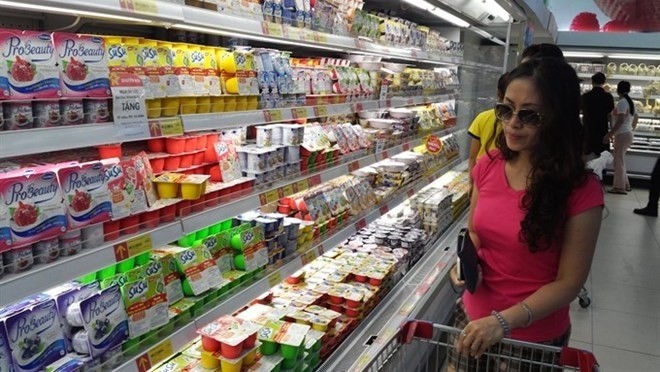Over the past few years, the economy has developed and the people's lives have been improved, contributing significantly to changing the shopping habits of the Vietnamese people. In large cities, instead of shopping at popular markets or small grocery stores, consumers tend to look for retail brands and e-commerce websites to select their favourite products. According to the Vietnam Retailers Association (ARV), Vietnam is listed among the top 30 countries with the most vibrant retail market in the world. Results of a survey by A.T.Kearney, a US management consulting firm, also showed that retail is one of the six sectors attracting the largest foreign investment in Vietnam.
The retail market in Vietnam is attracting not only domestic businesses but also brands from regional and international market, such as Alibaba, Walmart, 7 Eleven, Circle K, and GS 25. Meanwhile, many multi-sectorial corporations such as Vingroup have also participated in this potential market. The group is aiming to launch a retail system named Vinmart with 200 supermarkets and 4,000 convenience stores by 2020.
However, besides the bright spots, the retail market in Vietnam still has many worrying issues such as ambiguity, fraudulent origin and quality of goods, false advertising, and the consumption of counterfeit and poor quality goods. After the scandal of the Khaisilk Group, a top Vietnamese silk brand that was selling products made in China in 2017, many other names which are quite familiar to domestic consumers such as Miniso, Mumuso, Con Cung are also facing complaints about the ambiguous origin of their brand and products. In 2015, shipments of up to 100,000 counterfeit products of a popular cosmetic distributor in the North were seized by the Hanoi Market Management Department. Similarly, in 2017, a cosmetic retailer was also accused of importing products with unclear origin worth over VND11 billion by the Market Management Department (the Ministry of Industry and Trade). Consumers have also gradually lost their confidence in certain online brands for selling fake products.
It can be said that the violations have become more sophisticated and complex through the application of modern technologies and the establishment of trans-border smuggling networks related to several people and businesses. In addition, fake and low-quality products are dominant on the market due to overlaps in legal documents; there is a lack of manpower and equipment; loose coordination between sectors; poor local awareness-raising campaigns; and more sophisticated smuggling tricks. In many localities, such associations as the Association for Science and Technology for Standardisation of Quality and the Protection of Consumer Rights of Vietnam, the Association for the Protection of Consumers' Rights still operate in a modest manner and even lack effectiveness. In addition, the level of administrative sanctions for acts such as trading in and producing counterfeit goods is still very low. Furthermore, many domestic manufacturers themselves are less interested in protecting their products, while investment for building a system of stamps for origin access and anti-counterfeit stamps are still limited.
In order to build up a healthy business environment of the retail market in which the consumers' interests are protected, it is necessary to have a drastic and synchronous participation of the relevant agencies, associations, enterprises, and consumers. Particularly, violations related to the production and sale of counterfeit and poor quality goods must be strictly handled.
















